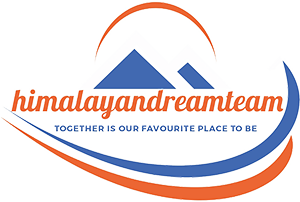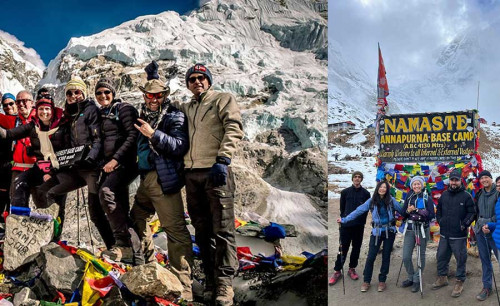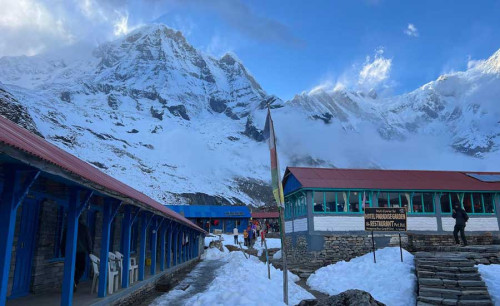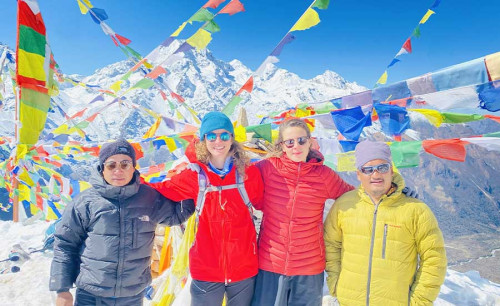Packing List for Peak Climbing in Nepal
Published On : 1st Nov, 2024 By Himalayan Dream Team

Ultimate Packing List for Peak Climbing in Nepal: Gear, Essentials, and Expert Tips
Climbing in Nepal requires cautious planning and a prepared packing list. Be it the pro climber or a first-time adventurer, this guide will walk you through all the necessary items, from travel documents to climbing equipment, first aid, personal hygiene, and even recommended brands. Let's dive into everything you need to pack for a safe and successful climb.
1. Travel Documents
Ensure you are equipped with all the necessary traveling documents before arrival.
- Passport - should be valid for a minimum of six months from your date of entry
- Visa to Nepal - upon entry into Tribhuvan International Airport, Kathmandu, or in advance, in Nepalese embassies.
- Climbing permit - depending on the peak, such as Island Peak, Mera Peak, among other peaks, and the area of trekking
- Travel Insurance - Must cover high-altitude climbing, including emergency rescue by end.
- Copies of Itinerary: One hard copy of your itinerary and emergency contact data should be carried with you at all times for quick reference.
2. Travel Clothing
Correct clothing helps ensure warmth, comfort, and safety at high altitude.
Headwear:
- Sun Hat: Wide-brimmed for sun protection
- Wool or Fleece Hat: To wear when it's cold, above 5500ft, or higher
- Balaclava or Neck Gaiter: Most versatile in extreme cold or wind
Bodywear - Torso:
- Base Layers: Lightweight, moisture-wicking-merino wool or synthetic
- Insulating Layers: Fleece jacket and/or down jacket for added warmth.
- Outer Layer: Waterproof, windproof shell jacket to protect against rain, snow, and wind.
Handwear:
- Inner Gloves: Lightweight thermal gloves
- Outer Gloves: Waterproof, windproof, insulated gloves
- Bodywear-worn on the body underneath the torso:
- Base Layer Pants: Leggings that wick away moisture.
- Insulating Pants: Fleece or down pants for higher altitudes
- Outer Pants: Waterproof breathable shell pants
Footwear:
- Climbing Boots: Insulated, waterproof, crampon-compatible
- Camp Shoes: Lightweight lightweight shoes to relax at base camps.
- Gaiters: Block snow and debris from entering your boots.
3. Personal Gear & Accessories
Daypack in which to carry essentials, including a waterproof cover.
- Sleeping Bag: Good for -20°C or below for cold nights.
- Trekking Poles: Adjustable and heavy-duty to act like a balance stick on rocky grounds.
- Headlamp: For the early morning and evening visibility with extra batteries
- Sunglasses: High UV protection to prevent snow blindness
- Water Bottle/Hydration System: Insulated bottles or hydration reservoirs keep water from freezing
4. Climbing Equipment
Most of the Nepal peaks require specific climbing gears for the safety factor:
- Lightweight Ice Axe: Light enough not to weigh you down, and function for self-arrest in ice.
- Crampons: Fitting your climbing boots with the ability to give you grip on snow and ice.
- Harness: Safe, comfortable, with gear loops for climbing tools.
- Carabiners & Slings: With locking and non-locking carabiners, and slings to clip your ropes into place.
- Helmet: Hardshell helmet to prevent injury from falling debris or chunks of ice.
5. First Aid & Medicine High altitude requires a serious first aid kit:
- Altitude Sickness Medications: Diamox-presume and ask your doctor to prescribe to help alleviate AMS symptoms.
- Pain Relievers: Ibuprofen or acetaminophen for headaches.
- Blister Treatment: Band-aids, moleskin, antiseptic for blister care.
- Basic Supplies: Adhesive tape, gauze, antiseptic wipes, tweezers.
- Personal Medications: If you take prescription medication, bring the medication in its original package along with extra doses in case one is lost or damaged.
6. Toiletries/Personal Hygiene Biodegradable Soap:
To wash hands and clothes. Toothbrush & Toothpaste: Travel size is best to save weight and space. Wet Wipes: Very important to maintain personal hygiene when shower facilities are scarce.
- Sunscreen & Lip Balm: SPF 30+, to protect against intense UV rays.
- Toilet Paper & Hand Sanitizer: Important in remote areas where there may not be facilities.
7. Miscellaneous Items
- Power Bank / Solar Charger: This keeps electronics charged in the most remote areas.
- Camera: Light, with an extra pair of batteries in case one runs out, to shoot the scenic beauty.
- Snacks: High-energy snacks such as trail mix, granola bars, and electrolyte powder.
- Maps & Guidebook: Handy navigation tool if one is trekking without a guide.
8. Extras (For Men)
- Aftershave Cream: Light and soothing, to be used after shaving for comfort.
- Moisturizer: To be used to keep skin hydrated in cold and dry regions.
9. Extras (For Women)
- Moisturizer & Lip Balm: To counter high-altitude dryness.
- Female Hygiene Products: Enough supply, as this might not be available in the remote areas.
10.Seasonal Temperature Chart for Nepal
This seasonal temperature chart provides average temperatures at various altitudes in Nepal. Understanding the temperature range across different seasons helps prepare for peak climbing adventures.
| Altitude | Spring (March, April, May) | Autumn (Sept, Oct, Nov) | Winter (Dec, Jan, Feb) | |||
|---|---|---|---|---|---|---|
| Max. (°C) | Min. (°C) | Max. (°C) | Min. (°C) | Max. (°C) | Min. (°C) | |
| 1000m | 37 | 10 | 35 | 10 | 24 | 6 |
| 1500m | 33 | 9 | 34 | 7 | 22 | 4 |
| 2000m | 28 | 5 | 28 | 6 | 20 | 2 |
| 2500m | 25 | 2 | 25 | 5 | 18 | -1 |
| 3000m | 22 | 1 | 20 | 0 | 16 | -2 |
| 3500m | 18 | 0 | 18 | -3 | 14 | -4 |
| 4000m | 17 | -2 | 12 | -4 | 12 | -7 |
| 4500m | 16 | -4 | 11 | -5 | 10 | -6 |
| 5000m | 14 | -6 | 10 | -8 | 6 | -12 |
| 5500m | -4 | -20 | -5 | -21 | -13 | -26 |
| 6000m | -7 | -23 | -8 | -24 | -16 | -29 |
| 6500m | -12 | -27 | -12 | -27 | -19 | -32 |
11.Recommended Brands of Gears, Equipment & Accessories for Trekking
This chart offers a helpful reference for packing suitable clothing and gear for various altitudes during different seasons in Nepal’s mountains. Each altitude level experiences a unique range of temperatures that should be taken into account when preparing for your peak climbing adventure.
| Items | Recommended Brands |
|---|---|
| Long/Short Polypropylene Sleeve Shirt | Icebreaker, Under Armor, Columbia, Berghaus |
| Fleece Wind-Stopper Jacket or Pullover | Berghaus, Helly Hansen, The North Face, Mountain Hardwear, Arc’Teryx |
| Soft Jacket, Fleece or Soft Shell | The North Face, Berghaus, Icebreaker, Arc’Teryx |
| Down Jacket (Puffer Jacket) | The North Face, Arc’Teryx, Rab Positron, Mountain Hardwear |
| Waterproof Jacket with Hood (Waterproof/Breathable) | The North Face, Arc’Teryx, Berghaus, Mountain Hardwear |
| Sports Bra (Women) | Brooks FastForward, Icebreaker, Smartwool Racerback, Brooks Dare, Handful |
| Warm Gloves or Mittens | Bellemere, Garnet Hill, Vermont, Hobbs London, L.L Bean, The North Face, WhitePaws |
| Light Gloves | Under Armour, Terramar, Smartwool, Fox River, TRENDOUX, Dakine Storm Liner |
| Waterproof Hiking Pants | Gore-Tex, Patagonia, The North Face, Arc’Teryx, Columbia, Jessie Kidden, Mountain Hardwear, Marmot |
| Hiking Shorts | Columbia, Tru-Spec, Mountain Hardwear, The North Face, Arc’Teryx, ExOfficio Nomad |
| Fleece Pants | The North Face, Mountain Hardwear, Arc’Teryx, Patagonia, Stan Ray, Cotopaxi Abrazo, Burton Mine77 Sherpa |
| Light Thermal Trousers | GORE H5, Rab Positron, Craghoppers, Acai Women’s, Montane Women’s, Arc’Teryx, Vaude |
| Undergarments | Icebreaker, Under Armour, Cw-X, Moving Comfort, Shock Absorber |
| Hiking Boots | Berghaus, Mammut, La Sportiva, Salomon, Merrell, Zamberlan |
| Hiking Socks | Bridgedale, Smartwool, REI Co-op, Darn Tough, Farm to Feet, Wrightsock, Balega, Icebreaker, Stance |
| Trekking Sandals | Scarpa, Salomon, Hi-Tec, Dream Pairs, Teva Hurricane, Xero Shoes, Chaco Z, KEEN Newport |
| Gaiters | Salomon, Outdoor Research, Unigear, WINOMO, Pike Trail, Moxie Gear, ALTRA Trail |
| Running Shoes/Trainers | Salomon, Merrell, La Sportiva, VJ Ultra, Brooks Cataman, Hoka Speedgoat |
| Trekking Socks | Bridgedale, Smartwool, Darn Tough, Icebreaker, Wigwam, Columbia, Injinji, Thorlos Lite |
| Sleeping Bag | Mountain Hardwear, The North Face, REI Magma, Marmot, ZPacks, Teton Sports, Sleepingo, Ohuhu, MallowMe Revalcamp, Coleman Brazos |
| Sleeping Bag Liners | Brave Era, Mountain Warehouse, Lifeventure, Sea to Summit, Cocoon Silk Mummy, Scottish Silkworm |
| Trekking Poles | Black Diamond, Gossamer, Montem Ultra Strong, Leki Vario Carbon, REI Co-op, Pace Maker, Kaito |
| DayPack | Osprey, Vorlich, Gregory, REI Flash, Deuter Speed, Patagonia, Hyperlite, Six Moon Designs |
| Thermosets | Thermarest, Exped, TNH Outdoors, Coleman, Stansports, Lightspeed |
| Backpack Covers | Joy Walker, Frelaxy, Osprey, LAMA, FANCYWING, Deuter, Mountain Top, Jepeak, FOME, OUTJOY, Unigear |
| Water Bottle | Nalgene, Hydro Flask, Platypus Platy, Katadyn BeFree, Camelbak, Klean Kanteen, HydraPak Recon |
12.Recommended Brands of Gears, Equipment & Accessories for Climbing/Expedition
| Items | Recommended Brands |
|---|---|
| High Insulated Double Boot | La Sportiva Olympus Mons, Scarpa Phantom, La Sportiva Spantik |
| Expedition Mittens | Black Diamond, Arc’teryx Venta, Mammut La Lista, Burton Clutch |
| Glacier Glasses | Julbo Vermont Classic, Northern Lights, Vuarnet Glacier, Cameleon |
| Harness | Mammut, Petzl, Edelweiss, Sterling, Black Diamond |
| Karabiner | HMS Bentgate, FavoFit, Heroclip, Wild Country, Black Diamond Positron |
| Belay Device | Black Diamond ATC, CAMP USA Matik, DMM Pivot, Mammut Smart |
| Ice-Tools | Petzl Summit, Camp USA, Black Diamond, Trango Raptor, Omega Pacific |
| Crampons | Black Diamond, Grivel G10, Petzl Leopard, Camp USA |
| Ascender | Petzl Ascension, Kong Climbing Lift, Black Diamond, Wild Country Ropeman |
| Climbing Helmet | Mammut, Camp and Edelrid, Petzl, Black Diamond, Retrospec Traverse |
| Tape Sling | Petzl Anneau, Rock Empire Dyneema, Edelrid Lanyards, Add-Gear |
| Descender | Asap’ Sorber, Mobile Fall Arrester, Lanyard, Petzl, Derope, Tractel, Minifor, Tirfor |
| Snow Bar/Snow Anchor | DMM Deadman, Black Diamond, MSR, Platypus, PackTowl, Seal Line, Thermarest |
| Expedition Suits | North Face, Black Yak, Kailas, Marmot, Mountain Hardwear, RAB |
Expert Tips for Peak Climbing in Nepal
| Tip Category | Description |
|---|---|
|
Choose the Right Peak |
Research peak difficulty levels and acclimatization needs. Beginners may choose trekking peaks, while experienced climbers may go for technically challenging peaks like Ama Dablam. |
|
Understand Permit Requirements |
Obtain the necessary permits, including climbing permits, TIMS card, and local area permits. Hiring a registered agency helps streamline the process. |
|
Physical & Mental Preparation |
Prepare with cardio and strength training and develop mental resilience for unpredictable mountain conditions. |
|
Essential Climbing Skills |
Learn basic mountaineering skills, including crampon use, ice-axe handling, and rope management. Practice on lower altitude peaks before attempting high peaks in Nepal. |
|
Plan for Altitude Acclimatization |
Ascend gradually, with rest days, and stay hydrated to manage altitude. Increase altitude by no more than 300-500m per day above 3,000m. |
|
Pack Quality Gear |
Use high-quality, weatherproof gear, including insulated double boots, a down jacket, glacier glasses, and other essentials for peak climbing. |
|
Hire Experienced Guides and Porters |
Engage certified local guides and porters for safe navigation, technical advice, and logistical support. Porters can carry heavier loads, preserving your strength. |
|
Follow Safety Protocols |
Monitor weather closely, know symptoms of altitude sickness, and follow your guide's advice for safety. Always be prepared to adjust plans if conditions change. |
|
Environmental and Ethical Considerations |
Practice Leave No Trace principles, respect local culture, and support eco-friendly tourism to protect the mountain environment. |
|
Stay Flexible with Your Schedule |
Allow buffer days for weather and acclimatization, and be ready to adjust your schedule. Listening to your guide and your body ensures a safe and enjoyable climb. |
Top 6 Peaks of Nepal Elevation, Duration and Requirements
Climbing in Nepal is a sought-after activity for its abundance of high-altitude peaks, coupled with unmatched Himalayan landscapes for mountaineers and adventure seekers. From challenging expeditions on the world's highest mountains to relatively accessible climbing peaks, Nepal caters to all sorts of climbers of different levels. Here is an overview of what one should expect: popular peaks, the best climbing seasons, permits, and things one should have as a climber
| Peak Name | Elevation (m) | Location | Description | Best Season |
|---|---|---|---|---|
| Mera Peak | 6,476 | Everest Region | Highest trekking peak in Nepal with spectacular views, crossing high passes. | Spring, Autumn |
| Island Peak (Imja Tse) | 6,189 | Everest Region | Popular for its panoramic views and glacier crossing. | Spring, Autumn |
| Lobuche East Peak | 6,119 | Everest Region | Technical sections and glacier travel with views of Ama Dablam and Lhotse. | Spring, Autumn |
| Yala Peak | 5,520 | Langtang Region | Accessible and less technical, great for beginners. | Spring, Autumn |
| Tharpu Chuli (Tent Peak) | 5,695 | Annapurna Region | Unique tent-shaped peak with trekking and technical climbing sections. | Spring, Autumn |
| Chulu Far East Peak | 6,059 | Annapurna Region | Challenging climb with high passes and technical sections. | Spring, Autumn |
Mera Peak Climbing
 Mera Peak, at 6,476 meters, is the highest trekking peak in Nepal and is known for its spectacular views and straightforward climbing route. Located in the Everest region, it offers a journey through the Hinku Valley, crossing high-altitude passes and remote villages. The climb itself involves glacier crossing and the use of basic mountaineering skills, making it an excellent choice for those seeking a high-altitude adventure.
Mera Peak, at 6,476 meters, is the highest trekking peak in Nepal and is known for its spectacular views and straightforward climbing route. Located in the Everest region, it offers a journey through the Hinku Valley, crossing high-altitude passes and remote villages. The climb itself involves glacier crossing and the use of basic mountaineering skills, making it an excellent choice for those seeking a high-altitude adventure.
For climbers looking to experience stunning views of Mount Everest, Lhotse, and other iconic peaks, Mera Peak Climbing is an ideal option. It requires a good level of physical fitness, but with proper preparation and acclimatization, it's achievable for most experienced trekkers. The best time to climb Mera Peak is during the spring and autumn seasons, when the weather is stable, and the skies are clear.
Top 10 Highlights of the Mera Peak Climbing
- Exciting flight to Lukla Airport, a scenic and adventurous way to approach the Himalayas.
- Trekking off the main trail through quiet valleys and far-flung Sherpa villages.
- Immersion in Sherpa culture with its hospitality and peculiar traditions.
- Impressive Numbur and Nupla peaks right from the front stage of the trek.
- The acclimatization stop in Tangnang offers a breathtaking view of glaciers and peaks.
- Climb the highest trekking peak of Nepal, at 6,476 meters in the Everest region.
- Diverse flora and fauna, trekking through lush Himalayan forests
- Presence of Buddhist shrines, charming villages along the serene trail
- Panoramic views of the world's tallest peaks from the Mera Peak summit
- Starlit nights in Himalayan villages bring a peaceful close to each trekking day.
Island Peak Climbing
Island Peak, or Imja Tse, stands at 6,189 meters and is one of the most popular trekking peaks in Nepal. Located near the Imja Glacier in the Everest region, the journey begins with a flight to Lukla and a trek through the classic Everest Base Camp route. Island Peak Climbing provides an exhilarating experience with a challenging ridge climb and glacier crossing. The climb offers panoramic views of Mount Everest, Lhotse, and other Himalayan peaks.
This peak climbing in Nepal is suitable for trekkers with basic climbing experience and those who want to challenge themselves with a technical ascent. The best time to climb Island Peak is during the spring and autumn seasons, from March to May and September to November, when the weather conditions are most favorable. The final ascent requires crampons, ice axes, and other climbing gear, adding to the adventure.
Top 10 Highlights of Island Peak Climbing
- Experience mountaineering right in the middle of the Nepal Himalayas with Island Peak as the ultimate focus.
- Observe the brilliant sunrise from the high slopes of Island Peak, illuminating the peaks around.
- Witness the panoramic views of Everest, Lhotse, Nuptse, Ama Dablam, and the Khumbu Icefall from the summit of the peak.
- Catch the sunrise over Everest from Namche Bazaar-a magic start to your Himalayan journey.
- Witness sunset over Everest from Kala Patthar, at 5,545 meters.
- Spend three unforgettable weeks with Sherpa guides, learning from their expertise and culture.
- Feel the magic of standing atop Island Peak surrounded by the towering giants of the Khumbu.
- Submerge into Sherpa culture, staying in villages and witnessing traditional lifestyles of the Himalayas.
- Practice glacier crossings and high-altitude climbing, gaining invaluable mountaineering experience.
- Reach a deep level of personal satisfaction by conquering Island Peak in the Himalayas.

Lobuche East Peak Climbing
Lobuche East, at 6,119 meters, is one of the top trekking peaks in Nepal's Everest region. The climb involves technical sections and glacier travel, making it a rewarding experience for experienced trekkers and climbers. The journey begins with a flight to Lukla and a trek through the classic Everest Base Camp route, passing through Namche Bazaar and Tengboche. Lobuche East Peak Climbing offers remarkable views of the Everest region's iconic peaks, including Ama Dablam and Lhotse.
This peak climbing is ideal for those seeking a more challenging climb, as it requires good physical fitness and basic climbing skills. The best time to climb Lobuche East is during the spring and autumn seasons, when the weather is most stable, allowing for clear views and safe climbing conditions. This peak is among the top six peaks to climb in Nepal, offering a thrilling experience for adventurers.
Top 10 Highlights of Lobuche Peak Climbing
- Lobuche Peak at the Heart of Nepal Himalayas for an unforgettable mountaineering adventure.
- Catch the breathtaking moments of sunrise from Lobuche summit while it lights up the surrounding peaks.
- Enjoy panoramic views of Everest, Lhotse, Nuptse, Ama Dablam, and Khumbu Icefall from high above.
- Watching sunrise over Everest from Namche Bazaar-capture magic in the Himalayas.
- Witness sunset over Everest from the exceedingly high Kala Patthar viewpoint at 5,545 meters.
- Spend three unbelievable weeks with certified guides and Sherpa support for a secure and unforgettable journey.
- Reach the summit of Lobuche Peak-extremely exhilarating and one of the famous trekking peaks of Nepal.
- Take in the sights and sounds of the rich culture in the Khumbu, visiting Buddhist monasteries and experiencing some of the many Sherpa traditions.
- Test your skills on glacier and high-altitude climbing, gaining vital mountaineering experience.
- Celebrate the sense of achievement that this is the lifelong dream-to climb in the Himalayas.

Yala Peak Climbing
Yala Peak, at 5,520 meters, is a more accessible peak climbing option in the Langtang region of Nepal. The journey begins with a drive to Syabrubesi, followed by a multi-day trek through the Langtang Valley. The final ascent to Yala Peak is straightforward, with minimal technical challenges. Yala Peak Climbing offers stunning views of the Langtang region and surrounding peaks like Langtang Lirung and Shishapangma, making it one of the best peaks for climbing in Nepal.
This trek is suitable for beginners and experienced trekkers alike, providing a unique adventure in a relatively unexplored area. The best time to climb Yala Peak is during the spring and autumn seasons, when the weather is most stable, and the landscapes are at their most vibrant. Yala Peak Climbing is an excellent introduction to high-altitude trekking and climbing.
Top 10 Highlights of Yala Peak Climbing
- Beginner-friendly summit, perfect for new mountaineers seeking a Himalayan climbing experience.
- Journey through the stunning Langtang Valley, known for its untouched natural beauty.
- Trek with expert Sherpa guides, offering local insights and expertise along the trail.
- Immerse in Tibetan culture, experiencing traditions and lifestyle in the Langtang region.
- Enjoy the thrill of Yala Peak climbing, a rewarding adventure with high-altitude views.
- Scenic drive to Syabrubesi in Rasuwa, the gateway to the Langtang region and Yala Peak.
- Trek through the Valley of Glaciers, marveling at icy landscapes and snow-capped mountains.
- Engage with the Tamang and Sherpa people, experiencing their rich culture and traditions.
- Spot rare wildlife, such as Red Pandas, Snow Leopards, Himalayan Monals, and Black Bears.
- Visit Kyanjin Gompa and Tserko Ri viewpoint, for panoramic views of mountains, valleys, and glaciers.

Tharpu Chuli (Tent) Peak Climbing
Tharpu Chuli, also known as Tent Peak, stands at 5,695 meters and is located in the Annapurna region, within the Annapurna Sanctuary. The trek to reach Tharpu Chuli involves a drive to Nayapul and a multi-day trek through the Annapurna Base Camp route. Tharpu Chuli Climbing is known for its unique tent-like shape and provides a mix of trekking and technical climbing sections, offering a rewarding experience in one of the top trekking regions of Nepal.
This peak climbing in Nepal is suitable for experienced trekkers and those with basic climbing skills, as it requires glacier crossing and technical equipment. The best time to climb Tharpu Chuli is during the spring and autumn seasons, when the weather conditions are optimal for climbing. It is among the top six peaks to climb in Nepal, offering a unique experience within the Annapurna Sanctuary.
Top 10 Highlights of Tharpu Chuli (Tent) Peak Climbing
- Go on an iconic virgin climb in the Himalayas with the beautiful Tharpu Chuli Peak.
- Catch panoramic views from the summit that includes the Annapurna I, Machapuchare, and Hiunchuli.
- Trek right into the Annapurna Conservation Area, which boasts rich biodiversity and habitat for various wildlife.
- Come across traditional Gurung villages to learn about Tibetan Buddhism and local culture.
- Travel through some beautiful valleys, crossing moraines and raging rivers en route.
- Do some energetic yet rewarding ascents through snow and ice to the summit.
- Take in the sights of scenic trails lined with rhododendron and pine forests, creating an atmosphere of lush trekking.
- Search for wild animals native to the Himalayas, like the rare Snow Leopard, Himalayan Black Bear, and mountain Thar.
- The starting point will be Nayapul, with a route comprising some iconic villages such as Ghandruk and Chomrong.
- Guided by expert locals with decades of experience to take care of safe but memorable travel.

Chulu Far East Peak Climbing
Chulu Far East Peak, standing at 6,059 meters, is one of the most popular trekking peaks in the Annapurna region. The journey to Chulu Far East begins with a drive to Besisahar, followed by a multi-day trek through the Annapurna Circuit route. The climb involves crossing high-altitude passes and navigating technical sections, making it a challenging yet rewarding experience. Chulu Far East Climbing provides stunning views of the Annapurna range, Manaslu, and Dhaulagiri.
This peak climbing in Nepal is ideal for experienced trekkers and those with some climbing experience. It requires good physical fitness and basic mountaineering skills. The best time to climb Chulu Far East is during the spring and autumn seasons, when the weather conditions are most stable. It's among the top trekking peaks in Nepal for climbing, offering an adventurous and memorable experience in the heart of the Annapurna region.
Top 10 Highlights of the Chulu West Climbing
- The trekkers get to witness varied natural beauty, which consists of rivers, waterfalls, dense forests, and hidden landscapes of Annapurna.
- Relish the panoramic view of peaks of the massifs: Annapurna, Dhaulagiri, Manaslu, Ganesh Himal, Lamjung Himal, Machhapuchhre, Nilgiri, and Tilicho.
- The great cultural diversity can be felt with the availability of various ethnic communities along the trail.
- The beauty of the iconic Thorong La Pass, one of the highest passes in the world, lies at an altitude of 5,416 meters.
- Visiting the holy Muktinath Temple, a sacred place for Hindus and Buddhists alike.
- Reaching the top of Chulu West was a peak which could easily be summited by beginners, thus making it not too challenging but rewarding.
- The panoramic view of the Himalayas could be viewed from this peak of Chulu West.
- Have some peaceful alpine camps at base camp and high camp.
- Scenic trekking through the region of Annapurna with daunting mountain scenery.
- Behold a fascinating Himalayan sunrise whereby the first rays of the sun brighten the peaks.

Trekking Peaks in Nepal: Unique Alternatives to Everest
Discover the most breathtaking trekking peaks in Nepal, ideal for those looking for a unique Himalayan experience beyond Everest. Each of these peaks offers distinctive scenery, challenges, and views that make for unforgettable adventures.
| Peak Name | Altitude | Region | Difficulty | Why Climb? |
|---|---|---|---|---|
| Mera Peak | 6,476m | Everest | Moderate | Ideal for high-altitude beginners. Quiet trails and panoramic views of Everest and Makalu make this a stunning experience. |
| Pharchamo | 6,187m | Rolwaling | Moderate | Overlooks Tashi Lapcha Pass with unique views of Cho Oyo and the Khumbu range. A more secluded option with challenging icy terrain. |
| Island Peak (Imja Tse) | 6,173m | Everest | Challenging | Perfect for trekkers seeking a classic Everest Base Camp trek with a rewarding climb. Views include Everest, Lhotse, and Ama Dablam. |
| Pisang Peak | 6,091m | Annapurna | Moderate | Set on the Annapurna Circuit, Pisang Peak is ideal for those who enjoy diverse terrain and a mix of technical climbing sections. |
| Chulu Far East | 6,060m | Annapurna | Easy to Moderate | Great for climbers looking to develop mountaineering skills. Offers unique views of Manaslu and the Mustang Valley. |
| Dhampus Peak | 6,012m | Dhaulagiri | Moderate | Close to Pokhara, this is one of the easiest peaks with panoramic views of Dhaulagiri and Annapurna, ideal for less experienced climbers. |
| Paldor Peak | 5,928m | Ganesh Himal | Challenging | A lesser-known gem with technical sections and scenic views across Manaslu. Supports the local Tamang communities. |
| Pokalde (Dolma Ri) | 5,806m | Khumbu | Easy | Great for warm-up climbs. Offers beautiful vistas of Lobuche, Makalu, and Ama Dablam without requiring technical expertise. |
| Yala Peak | 5,500m | Langtang | Easy | Ideal for beginners, located in Langtang National Park. Offers views of Shishapangma and Gangchempo near the Tibetan border. |
| Tent Peak (Tharpu Chuli) | 5,663m | Annapurna | Moderate | Perfect for first-time mountaineers, with breathtaking views of Annapurna I from the summit above Annapurna Base Camp. |
Choosing the right peak for your skill level and interest is essential for a safe and fulfilling climb. At Himalayan Dream Team Treks and Tours Pvt. Ltd., we ensure every trekker is prepared with the best guides and support for a remarkable Himalayan adventure. Explore beyond Everest and uncover the unique experiences these peaks offer.
Packing List for Peak Climbing in Nepal - FAQs
| Question | Answer |
|---|---|
| What type of clothing is essential for peak climbing in Nepal? | Layered clothing, including thermal wear, insulating jackets, and waterproof outerwear, is essential for varying temperatures at high altitudes. |
| Are specialized climbing boots necessary for peak climbing? | Yes, high-quality, insulated climbing boots with strong ankle support are crucial to handle rough terrains and prevent frostbite. |
| What kind of sleeping bag is best for high-altitude climbs? | A four-season sleeping bag rated for temperatures below -20°C (-4°F) is recommended for extreme cold at high altitudes. |
| Do I need to carry my own climbing gear? | While some gear can be rented, it’s recommended to carry personal items like helmets, harnesses, crampons, and ice axes for safety and reliability. |
| How should I prepare for hydration at high altitudes? | Carry a reusable water bottle and water purification tablets or filters, as staying hydrated is vital at high altitudes. |
| What food and snacks are recommended for energy on the climb? | High-energy snacks like nuts, energy bars, and dried fruits are recommended to maintain stamina during peak climbing. |
| Is sunscreen necessary for peak climbing in Nepal? | Yes, high SPF sunscreen and lip balm are essential to protect against intense UV exposure at high altitudes. |
| Are trekking poles needed for peak climbing? | Trekking poles help with balance and reduce strain on joints, especially during descent and uneven terrain. |
| What first aid supplies should I bring? | Basic first aid kits with altitude sickness medication, bandages, antiseptic wipes, and pain relievers are essential for emergencies. |
| Do I need a headlamp for peak climbing? | A high-quality headlamp with extra batteries is essential for early morning starts and low-light conditions on the mountain. |
| Should I carry extra batteries or a power bank? | Yes, temperatures can drain batteries quickly, so carrying spare batteries or a power bank is recommended for electronic devices. |
| What type of backpack is suitable for peak climbing? | A durable, waterproof backpack with a 40-50 liter capacity is ideal for carrying essential items without being too bulky. |
| How do I pack efficiently for peak climbing? | Use compression bags to organize and reduce the bulk of clothing and gear, and prioritize lightweight, multi-functional items. |
| Is renting equipment an option in Nepal? | Yes, gear like sleeping bags, jackets, and some climbing equipment can be rented in Kathmandu, though quality and fit may vary. |
| What personal hygiene items should I carry? | Carry biodegradable soap, toilet paper, hand sanitizer, and personal toiletries to maintain hygiene during the climb. |
Conclusion
Packing for peak climbing in Nepal wisely will set you up for a safe, comfortable, and successful ascent. With this packing guide, one will be fully prepared to tackle the awe-inspiring mountains of Nepal. Each item differs in function on your journey to make it smooth; hence, choosing high-quality gear from trusted brands is important, along with packing lightly and keeping safety a priority.
Recent Posts
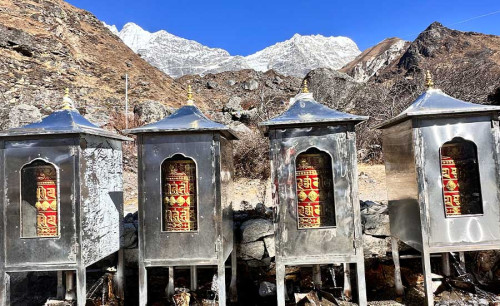
2nd Dec, 2025
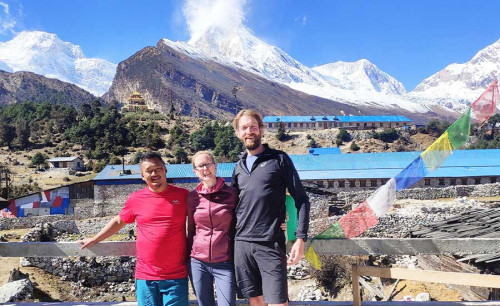
24th Nov, 2025
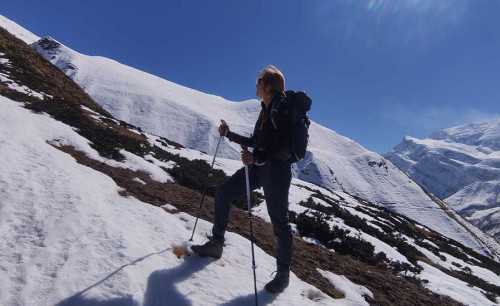
21st Nov, 2025
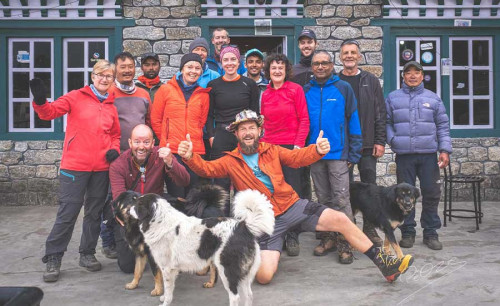
10th Nov, 2025
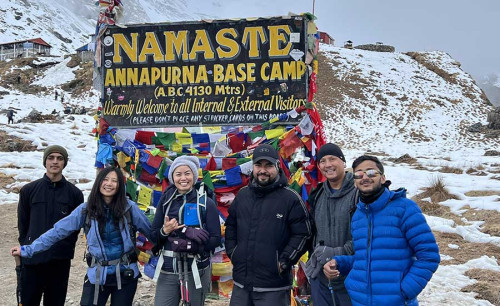
9th Nov, 2025

25th Oct, 2025

22nd Oct, 2025

17th Oct, 2025

17th Oct, 2025

13th Oct, 2025

